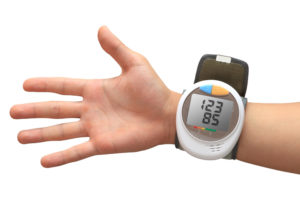 A new guideline reinforces the need to aggressively treat adults aged 60 and older with persistent systolic blood pressure at or above 150 millimeters of mercury (mm Hg). But how to approach those with systolic blood pressures from 140 to 150 mmHg and no identified high-risk co-morbid conditions remains controversial.
A new guideline reinforces the need to aggressively treat adults aged 60 and older with persistent systolic blood pressure at or above 150 millimeters of mercury (mm Hg). But how to approach those with systolic blood pressures from 140 to 150 mmHg and no identified high-risk co-morbid conditions remains controversial.
Systolic blood pressure indicates how much pressure blood exerts against artery walls when the heart beats.
The American College of Physicians (ACP) and the American Academy of Family Physicians (AAFP) published the evidence-based, clinical practice guideline in January. About 65 percent of adults in the United States over the age of 60 have hypertension, and the disease affects about 29 percent of all adults in the nation, they report.
Based on a background evidence review and systematic review sponsored by the U.S. Department of Veterans Affairs, the two organizations strongly recommended that physicians initiate treatment in adults aged 60 years old and older with persistent systolic blood pressure at or above 150 millimeters of mercury (mm Hg) to achieve a target systolic blood pressure of less than 150 mm Hg to reduce the risk of mortality, stroke, and cardiac events.
Treatments for hypertension include lifestyle modifications, such as weight loss, dietary modification, and increased physical activity; and antihypertensive medications, which include thiazide-type diuretics, angiotensin-converting enzyme inhibitors (ACEIs), angiotensin-receptor blockers (ARBs), calcium-channel blockers, and ?beta-blockers.
The guideline includes two additional recommendations – though ACP and AAFP characterize them as “weak,” based on moderate- or low-quality evidence:
- Physicians should consider initiating or intensifying drug therapy in adults aged 60 years old and older with a history of stroke or transient ischemic attack to achieve a target systolic blood pressure of less than 140 mm Hg to reduce the risk of recurrent stroke.
- Physicians should consider initiating or intensifying pharmacological treatment in some adults aged 60 years old and older at high cardiovascular risk, based on individualized assessment, to achieve a target systolic blood pressure of less than 140 mm Hg to reduce the risk of stroke or cardiac events. Increased cardiovascular risk includes people with known vascular disease, including those with diabetes, chronic kidney disease, metabolic syndrome (abdominal obesity, hypertension, diabetes and dyslipidemia); and those of older age.
Selected patients with high cardiovascular-disease risk and systolic blood pressures in the 130-140 mmHg range may also benefit from treating to lower blood pressures, but the benefits and downsides are more closely balanced, so that patient preference becomes a stronger driver of decision-making, according to the guideline.
The ACP and AAFP note that some patients may have falsely elevated readings in clinical settings (“white coat hypertension”). Therefore, it is important for physicians to ensure that they are accurately measuring blood pressure before initiating or changing treatment for hypertension.
“The most accurate measurements come from multiple blood pressure measurements made over time,” John Meigs, Jr., M.D., president, AAFP, was quoted as saying. “These may include multiple measurements in clinical settings or ambulatory or home-monitoring.”
For more information, see “Pharmacologic Treatment of Hypertension in Adults Aged 60 Years or Older to Higher Versus Lower Blood Pressure Targets: A Clinical Practice Guideline From the American College of Physicians and the American Academy of Family Physicians,” Annals of Internal Medicine, doi:10.7326/M16-1785
Physician practice lessons
Healthcare providers who wish to implement high-value, population-based prevention of hypertension-related morbidity and mortality should develop an office-based program with the following features, according to the American College of Physicians and the American Academy of Family Physicians:
- High-fidelity BP measurement support, including office blood pressure measurement conducted by well-trained staff, resources for training patients in home monitoring and/or availability of ambulatory blood pressure monitoring, and ongoing quality assurance efforts.
- Routine assessment of global cardiovascular-disease (CVD) risk in all patients over age 40, and in selected younger patients with multiple risk factors or extreme elevations of single risk factors.
- Provider training in shared decision-making for hypertension treatment and CVD risk reduction in general.
- Creation of a registry to track patients under treatment for hypertension (and other forms of CVD risk reduction).
- Use of non-visit-based follow-up for patients with moderate to severe hypertension who have had treatment initiation or changes (to monitor for effectiveness and for potential adverse effects).